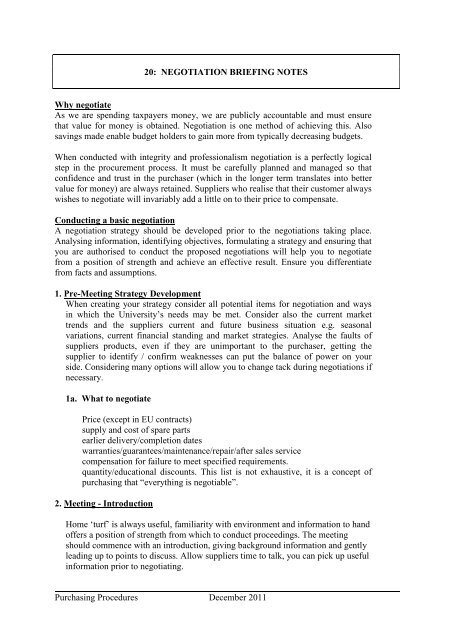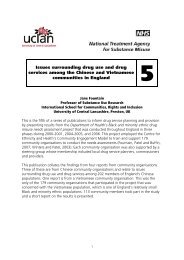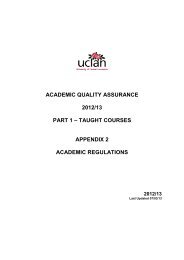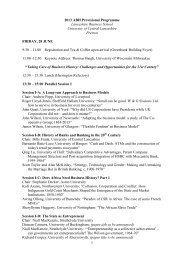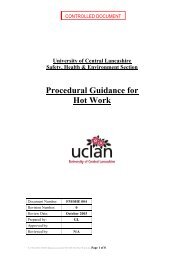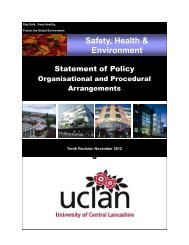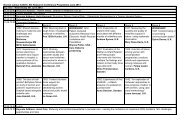PURCHASING PROCEDURES - University of Central Lancashire
PURCHASING PROCEDURES - University of Central Lancashire
PURCHASING PROCEDURES - University of Central Lancashire
You also want an ePaper? Increase the reach of your titles
YUMPU automatically turns print PDFs into web optimized ePapers that Google loves.
20: NEGOTIATION BRIEFING NOTES<br />
Why negotiate<br />
As we are spending taxpayers money, we are publicly accountable and must ensure<br />
that value for money is obtained. Negotiation is one method <strong>of</strong> achieving this. Also<br />
savings made enable budget holders to gain more from typically decreasing budgets.<br />
When conducted with integrity and pr<strong>of</strong>essionalism negotiation is a perfectly logical<br />
step in the procurement process. It must be carefully planned and managed so that<br />
confidence and trust in the purchaser (which in the longer term translates into better<br />
value for money) are always retained. Suppliers who realise that their customer always<br />
wishes to negotiate will invariably add a little on to their price to compensate.<br />
Conducting a basic negotiation<br />
A negotiation strategy should be developed prior to the negotiations taking place.<br />
Analysing information, identifying objectives, formulating a strategy and ensuring that<br />
you are authorised to conduct the proposed negotiations will help you to negotiate<br />
from a position <strong>of</strong> strength and achieve an effective result. Ensure you differentiate<br />
from facts and assumptions.<br />
1. Pre-Meeting Strategy Development<br />
When creating your strategy consider all potential items for negotiation and ways<br />
in which the <strong>University</strong>‟s needs may be met. Consider also the current market<br />
trends and the suppliers current and future business situation e.g. seasonal<br />
variations, current financial standing and market strategies. Analyse the faults <strong>of</strong><br />
suppliers products, even if they are unimportant to the purchaser, getting the<br />
supplier to identify / confirm weaknesses can put the balance <strong>of</strong> power on your<br />
side. Considering many options will allow you to change tack during negotiations if<br />
necessary.<br />
1a. What to negotiate<br />
Price (except in EU contracts)<br />
supply and cost <strong>of</strong> spare parts<br />
earlier delivery/completion dates<br />
warranties/guarantees/maintenance/repair/after sales service<br />
compensation for failure to meet specified requirements.<br />
quantity/educational discounts. This list is not exhaustive, it is a concept <strong>of</strong><br />
purchasing that “everything is negotiable”.<br />
2. Meeting - Introduction<br />
Home „turf‟ is always useful, familiarity with environment and information to hand<br />
<strong>of</strong>fers a position <strong>of</strong> strength from which to conduct proceedings. The meeting<br />
should commence with an introduction, giving background information and gently<br />
leading up to points to discuss. Allow suppliers time to talk, you can pick up useful<br />
information prior to negotiating.<br />
Purchasing Procedures December 2011


